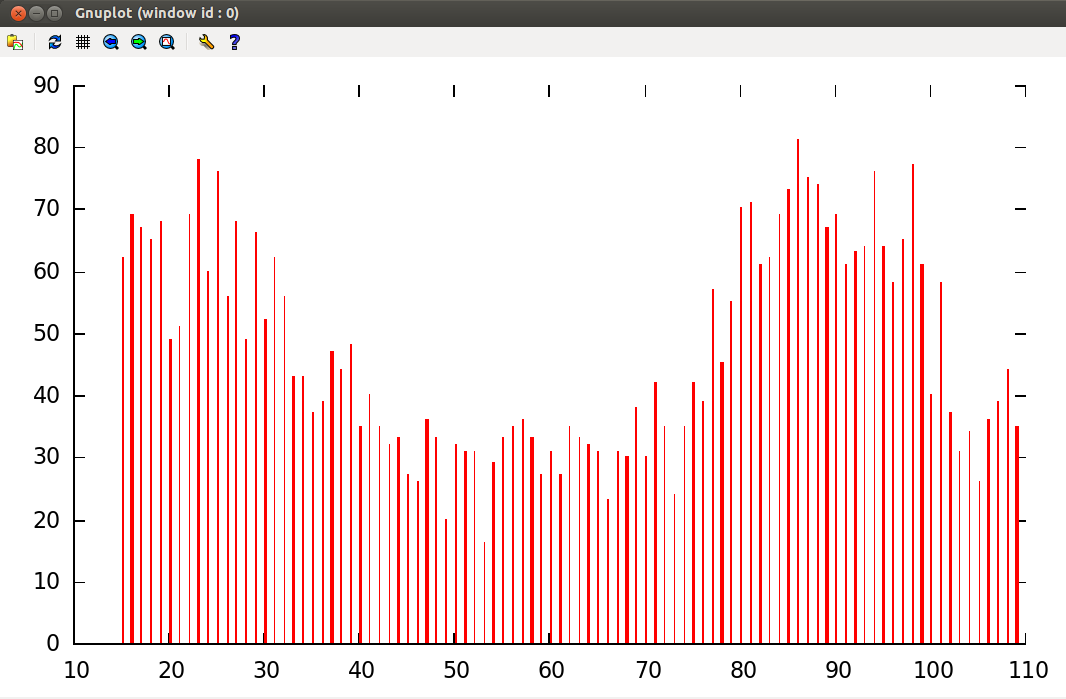

Tags: data, epslatex, label, legend, logscale, standaloneįigure 1 shows the theoretical curves of photon flux density dependent on the photon energy for different characteristic tail state energies E0. Set label 2 '\ft $5$\,meV' at 1.38,4e9 rotate by 78.5 center tc ls 1 Set terminal epslatex size 9cm,7cm color colortext standalone header \Īfter the definition of the abbreviation we can use it for every label we are interested in. First we introduce a abbreviation for the font size by adding a command definition to the header of our latex file. The label size is changed by setting it to \footnotesize with the following code.
GNUPLOT RANGE CODE
( code to produce this figure, data)įigure 1 shows again the photon flux density from one of the last posts, but this time plotted with the epslatex terminal. 1 Photon flux density for different characteristic tail state energies E0 dependent on the photon energy.
GNUPLOT RANGE HOW TO
In this lesson, we learned how to create and plot a histogram of theĭata we generated in Lesson 1.Fig. # don't count items outside of histogram's range if not value = maximum:īin_index = int((value-minimum) // bin_size)įollowing contents: #!/usr/bin/env python import sys # count the items in each bin for value in col: Midpoint = lambda bin_num: minimum + bin_size*bin_num + bin_size/ 2 # calculate midpoint of each bin for plotting purposes I.e., the histogram has a range between [minimum, maximum) """ # derive the size of each bin from argumentsīin_size = (maximum - minimum) / num_bins Note: `minimum` is inclusive, but `maximum` is exclusive. `num_bin` bins are created between `minimum` and `maximum`. Each histogram contains the midpoints of each bin, and the number of items in each bin. """ Return a list of histograms of each column of data. In stats.py: def histogram(self, minimum, maximum, num_bins): Make only one histogram per column of data and use 5 bins each.Īdd the following method to the Dataset class To keep things simple for our purposes, we'll It is often useful to make several histograms, each with aĭifferent number/size of bins. (bins) we want to divide the data into, or how large weįor our dataset, we observe very few (if any) values outside the rangeĠ-20, so we will consider those to be our minimum and maximum values, That we want to consider, and we must also decide how many separate regions

When we create a histogram, we must decide the minimum and maximum values "bin size") and do not overlap, and we will also do it this way. Usually, the bin ranges are chosen so that they have the same size Of the values are counted to see how many are within each bin. Possible values for a variable is divided into several "bins". In this lesson, we will learn how to generate a histogram and plot it inĭistribution of a random variable. Finally, we briefly discussed two ways toĮxclude certain columns of data from analysis. To a file, then read the file to obtain the average and standard deviationįor each column of our data. In the previous lessons, we learned how to generate random data, save it 12: Average and RMSF from Multiple Structures.10: Center of Mass and Radius of Gyration.1: Introduction to Scientific Programming.


 0 kommentar(er)
0 kommentar(er)
